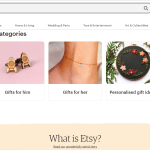There’s a big reason why so many people are diving into digital products right now—they work. You don’t need to worry about inventory, shipping, or dealing with suppliers.
You create it once and sell it as many times as people want it.
That’s a powerful model. But here’s the question I get asked all the time:
Which digital products actually pay the most?
That’s what this article is all about. I’m not just listing random ideas—I’ll walk you through what works, why it works, and what makes some digital products way more profitable than others.
I’ll also cover what goes into making money from them, how long it might take, and what you should be thinking about if you’re ready to jump in.
Let’s get into it.
What Are Digital Products?
Before we get into which ones pay the most, let’s keep things simple. A digital product is anything you can sell online that people can download or access digitally. No physical shipping. No packaging. Just pure value.
Some examples:
Online courses
Ebooks or guides
Printables and templates
Software or apps
Stock photos or music
Membership sites
Digital art and design files
These can be sold on your own website, on platforms like Gumroad, Etsy, Teachable, or even on marketplaces like Udemy or Creative Market.
What Makes a Digital Product Profitable?
It’s not just about what you sell—it’s how you sell it, who you’re selling to, and how scalable it is. Here’s what really affects your earning potential:
Price – Higher-ticket products (like full courses or software) can bring in way more per sale.
Volume – Some products, like templates or printables, are sold in high volume at lower prices.
Recurring Revenue – Memberships or subscription-based products (like SaaS) generate monthly income.
Niche Demand – A niche with urgent problems or strong communities tends to pay more.
Authority/Brand – If people trust you or your brand, they’re more likely to buy from you—and spend more.
So… Which Digital Products Pay the Most?
Here’s a ranked list based on income potential, ease of creation, and scalability:
1. Online Courses
Top earners in digital products almost always have a course in their lineup.
Platforms like Teachable, Thinkific, and Kajabi make it easy to set one up.
Why it pays well:
You can charge $50–$500+ per course.
Once created, it sells over and over.
You can build a strong brand as an educator.
Stats that matter:
According to Thinkific, over 64% of course creators earn more than $1,000/month, and some are pulling in six figures annually.
Best niches:
Business and finance
Health and wellness
Tech skills (coding, data science, AI)
Personal development
2. Software & SaaS (Software as a Service)
This one’s a beast. If you can create a simple tool that solves a real problem, even just for a small niche, you’re golden.
Why it pays well:
Monthly recurring income
Higher customer lifetime value (CLTV)
More stable revenue stream
Example:
Tools like Notion templates, or custom dashboards
Niche software (like invoicing tools for freelancers)
Did you know?
According to Statista, the SaaS market is projected to reach over $282 billion in 2024. Even tiny players are getting a slice of that.
3. Membership Sites & Subscriptions
Creating a paid community or content subscription is a powerful way to earn steady income.
Think:
Premium newsletter
Private podcast
Exclusive content library
Platforms:
Why it pays well:
Low barrier to entry
Recurring payments
Builds loyalty and trust over time
Top Patreon creators earn $20,000–$100,000/month, depending on their niche and fanbase.
4. Templates & Digital Assets
This includes:
Canva templates
Resume/CV templates
Notion setups
Website themes
They’re quick to make and sell well on platforms like:
Example:
Canva templates can sell for $10–$50 each, but if you sell 100 a month, that’s a steady $1,000–$5,000/month.
Low effort, high return—especially if you know what people are searching for.
5. Stock Photography, Music, and Video
If you’re a creative, this one’s for you.
Where to sell:
Why it pays:
One-time uploads, ongoing royalties
High demand for niche-specific content
Scalable—more content = more income
Top contributors on Shutterstock make $2,000–$10,000/month, but it takes a large, consistent portfolio.
6. Ebooks & Guides
Still going strong—especially when marketed right.
Topics that work best:
Self-help
Business/side hustles
Parenting
Fitness and nutrition
Price range:
$5 to $50, depending on the value. Many creators bundle ebooks with mini-courses or tools to increase perceived value.
You can sell through:
Your own site
7. Digital Art, Stickers & Printables
If you’re more on the creative side, platforms like Etsy or Gumroad are perfect.
Popular types:
Wall art
Planner inserts
Wedding or party printables
Digital stickers for GoodNotes or other planning apps
They don’t bring in high prices per unit ($2–$10), but they sell in huge volume, especially on Etsy.
Example:
Some Etsy sellers are making over $100,000/year just selling digital planners.
FAQs
Do I need a huge audience to make money from digital products?
Not at all. Having an audience helps, but if you solve a real problem or make something useful, your product can find buyers through marketplaces or SEO.
How long does it take to see results?
It depends on what you’re creating. A course or SaaS tool might take weeks to build, but once it’s launched, it can make passive income. Templates and printables can be faster to get up and running.
What’s the easiest one to start with?
Templates, ebooks, and printables are a great place to start. Low cost, simple tools, and no need for a big audience upfront.
Final Thoughts
Digital products are one of the best ways to earn income online. They’re flexible, scalable, and can turn your skills or ideas into real money.
Just remember: success comes from solving real problems, being consistent, and understanding what your audience values.
So… Which digital product do you think pays the most—and which one are you thinking about starting with?





GIPHY App Key not set. Please check settings